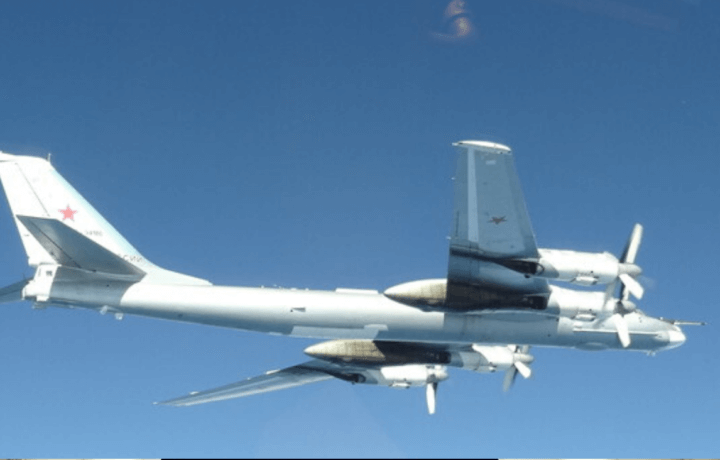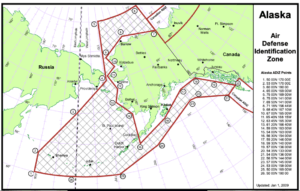For the second time in a week, the North American Aerospace Defense Command (NORAD) has detected Russian military aircraft off the coast of Alaska. On Tuesday night, F-22 Raptors intercepted the Russian formation, consisting of bomber, fighter, and support planes. Both interactions came precariously close to U.S. airspace, which extends twelve miles offshore the coast.
Another Day, Another Border Crossed
While the aircraft did not enter U.S. airspace, the interaction marks the eighth time this year that Russian Aircraft have penetrated the Canadian or Alaskan Air Defense Identification Zones, said NORAD commander Gen. Terrence O’Shaughnessy in a statement.
The ADIZ, as it is called, extends throughout much of the Bering Sea northwest of Alaska and the Aleutian Islands. Typically, Russian aircraft have been allowed to perform training in the airspace once identified, but the flight paths of recent formationshave come increasingly close to the U.S. border. Tuesday’s interaction took place only 20 nautical miles from the American coast.
U.S. Dishes It Back
The U.S. appeared to return the favor on Friday morning when Russian fighter jets intercepted two Air Force bombers flying over the Sea of Okhotsk near the country’s eastern coast. Russian fighter jets caught up with the American B-52’s north of Japan. Mirroring NORAD’s statement just two days before, the Russian Ministry of Defense said Friday: “At a considerable distance from the state border of the Russian Federation, the U.S. Air Force planes were continuously tracked by Russian monitoring capabilities. Su-30, Su-35, and MiG-31 fighters from the air defense quick reaction alert forces of the Eastern Military District were scrambled to intercept the targets.”
Aircraft Exchanges Globally with Russia
While the interactions over the Bering Sea have raised concerns, they are part of a broader exchange of recent provocations worldwide between the two countries. The United States Africa Command (AFRICOM) has noted a significant presence of Russian fighter jets training in Libya. The country has been at civil war since NATO-backed forces overthrew Moammar Gadhafi in 2011.
Satellite imagery reportedly reveals the fighter jets came from a Russian base in Libya, and that inexperienced pilots are flying the planes. The location alone is reason to suspect that Russia could be training Libyan fighters, and the routes directly overhead cities could put civilian populations at risk.
Brig. Gen. Bradford Gering, director of operations for AFRICOM, said in a statement: “Russia’s sustained involvement in Libya increases the violence and delays a political solution. Russia continues to push for a strategic foothold on NATO’s southern flank, and this is at the expense of innocent Libyan lives.”
Defense Systems Ready Despite COVID-19
The training flights have toed the line of international law and come at a time of heightened tensions between the two countries. NORAD commander O’Shaughnessy says, “Despite the COVID-19 pandemic, NORAD constantly monitors the northern approaches to our nations, and our operations make it clear that we will conduct homeland defense efforts 24 hours a day, 7 days a week, 365 days a year.” If nothing else, the recent provocations are proof of a capable and ready defense system. One hopes those capabilities will discourage further uses of force.





